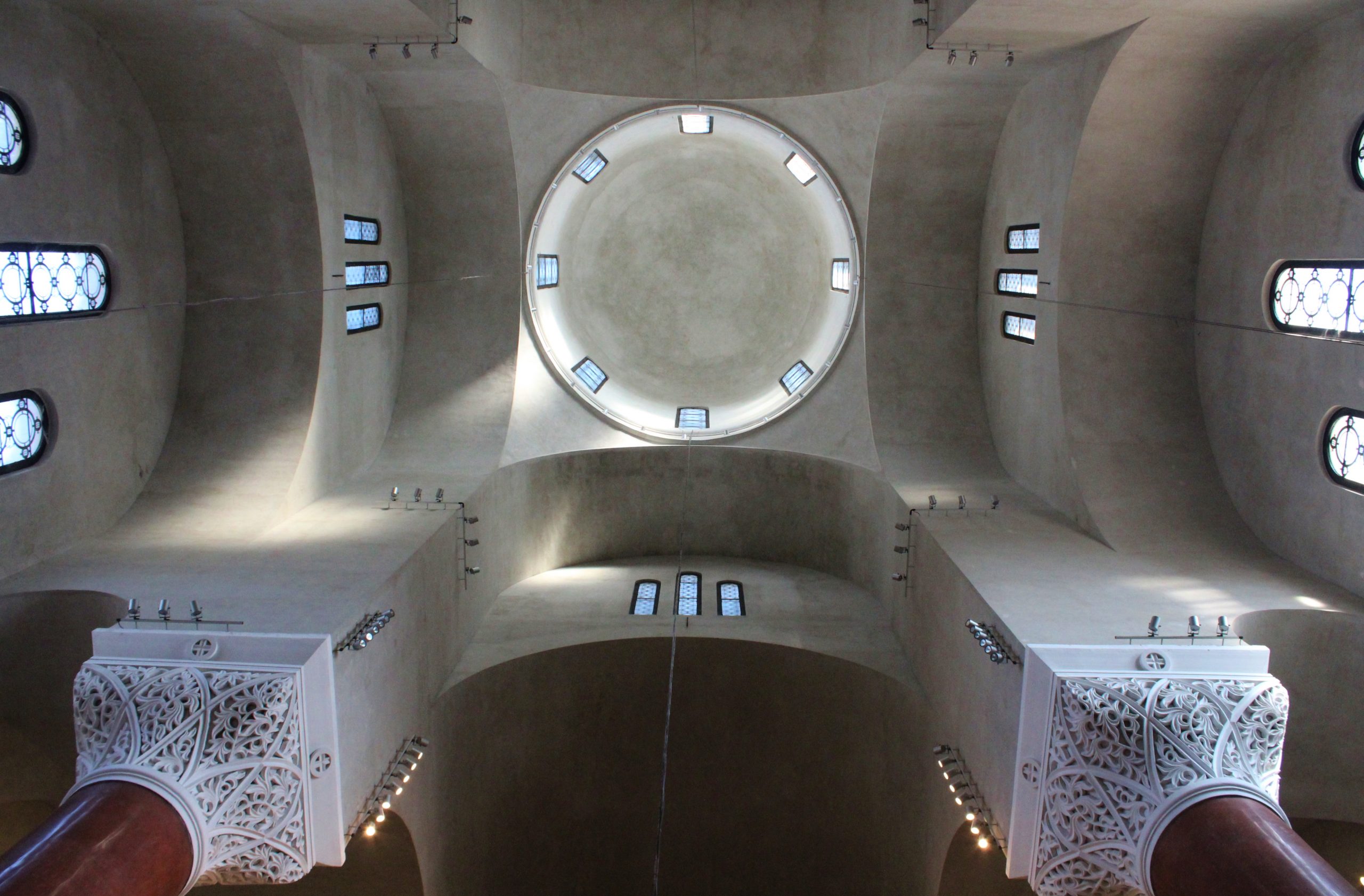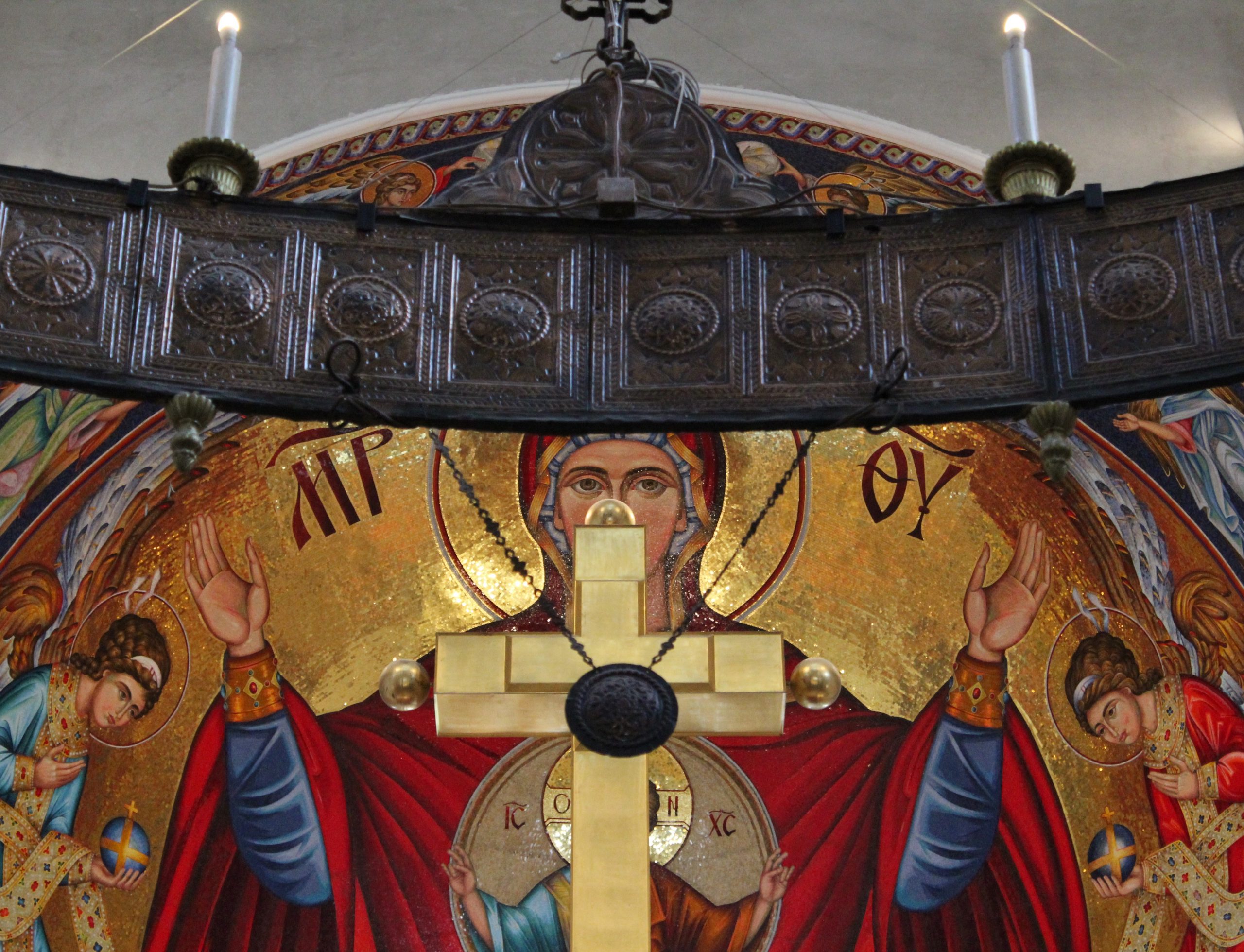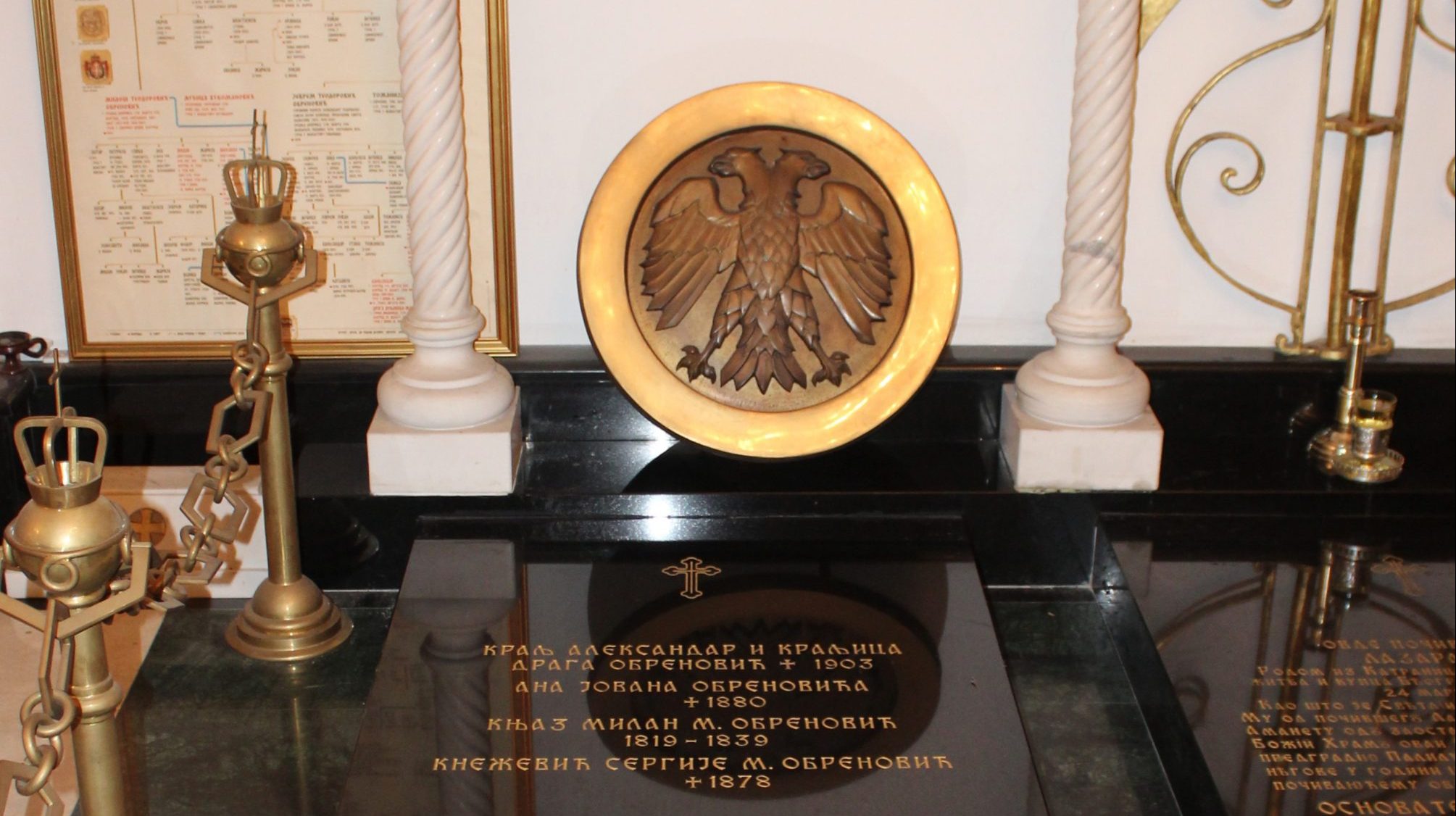WHERE IS IT?
The St. Mark's Church is located in Tasmajdan park, in Bulevar kralja Aleksandra street. Nearby there are the Parliament of Serbia, New Palace, Old Palace, Russian orthodox chruch and the building of RTS.
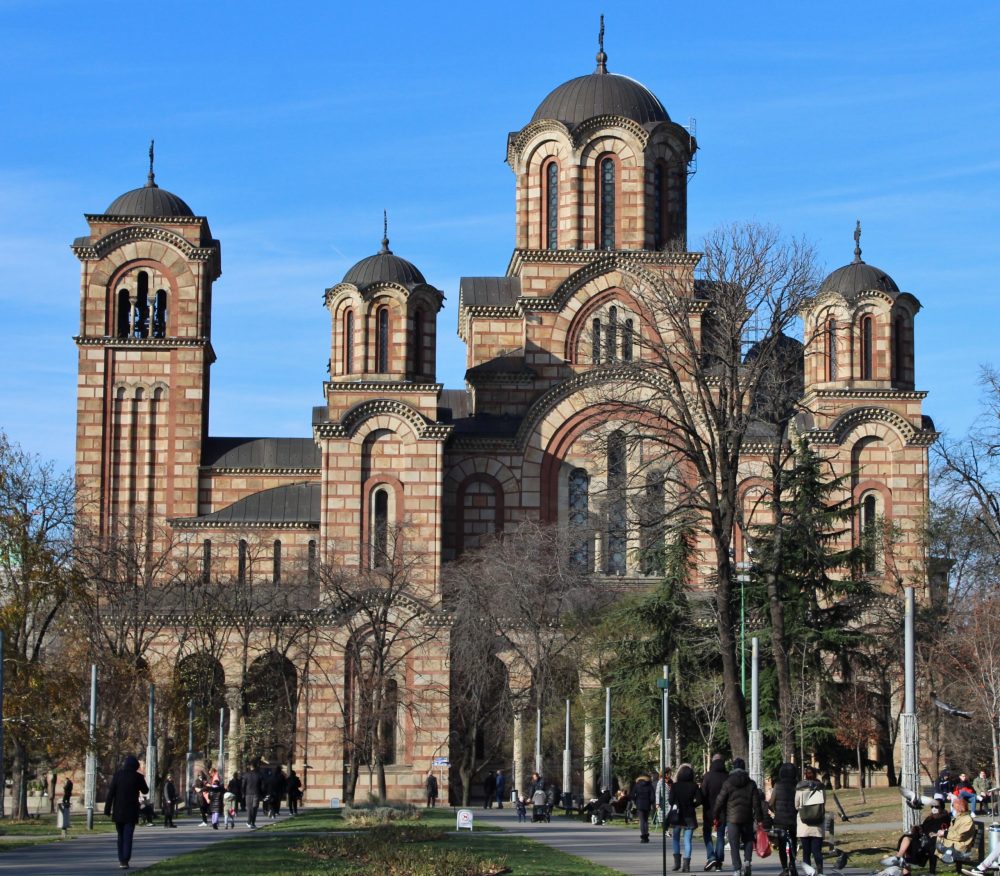
Oštećena još tokom Prvog svetskog rata, konačno je urušena 1941. kada se zapalio krov crkve pod nerazjašnjenim okolnostima. U crkvi su bili sahranjeni pojedini članovi dinastije Obrenović, a posebno mesto imali su grobovi poslednjeg kraljevskog para iz dinastije: Aleksandra i Drage Obrenović.
THE HISTORY
Until the beginning of the World War II, south of the current location, there was a smaller temple, built during the reign of Prince Miloš Obrenović (1835-1836). It was put up at the same place where the Belgrade pasha read the sultan's hatisherif about giving autonomy to Serbia. The founder of the temple was Lazar Panča, a merchant, who came from southern Serbia.
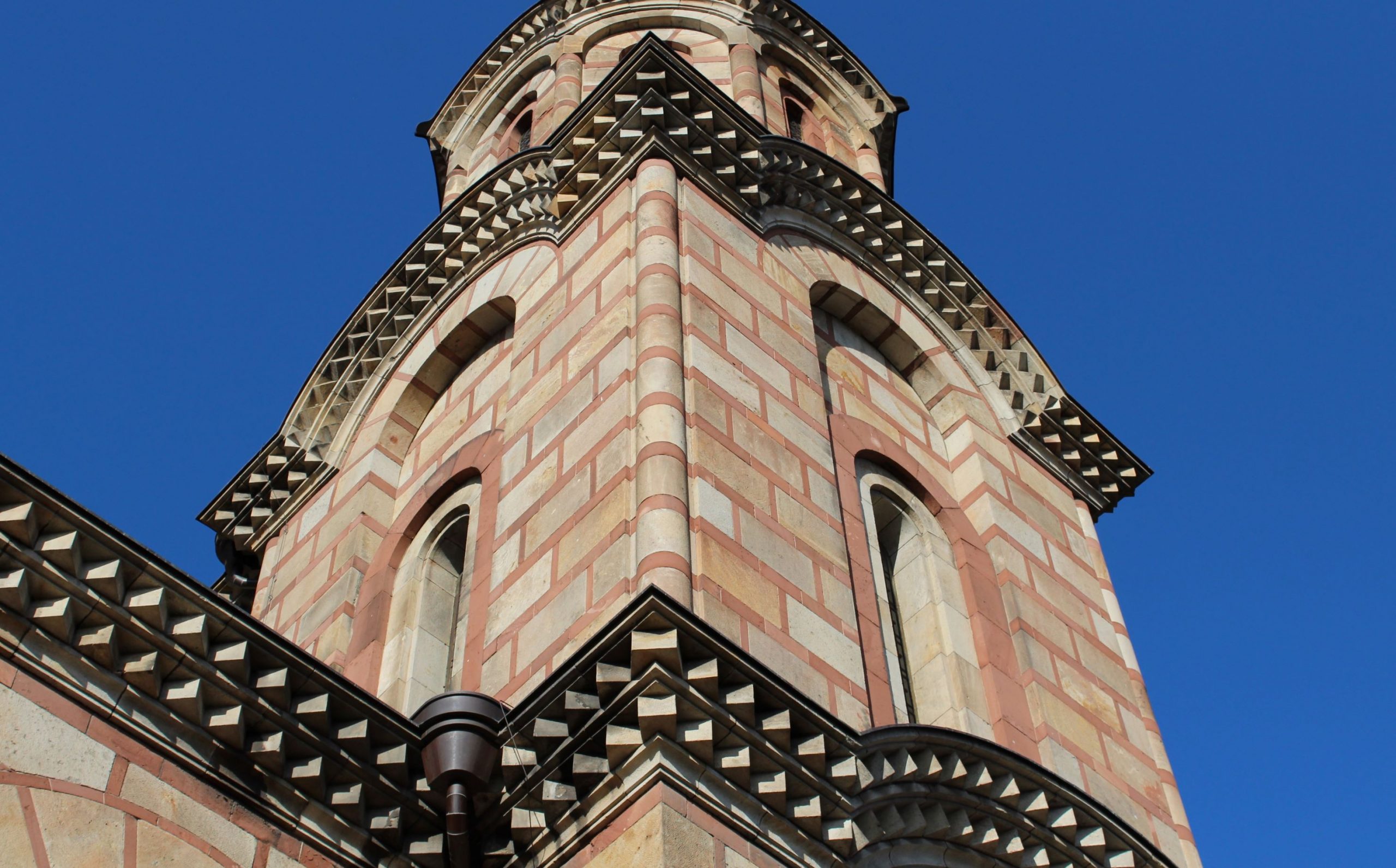
THE HISTORY OF THE NEW CHURCH
The current St. Mark's Church was built from 1931 to 1940, according to the project plan of brothers Petar and Branko Krstić. The architects wanted to make the church that would resemble the Gračanica monastery, so when it comes to its appearance, this church has all the features of neo-Byzantine architecture. After it was completed, it became the largest temple in the Kingdom of Yugoslavia. The church is 62 meters long, 45 meters wide, and the height of the main dome is 60 meters. The mosaic on the lunette above the entrance shows the evangelist Marko and it is the artwork of the painter Veljko Stanojević from 1961.
INTERIOR
The interior of the church is divided in the usual way into: a narthex, a nave and an altar space which is closed by a partition with iconostasis. Below the narthex there’s a crypt where in 1942, after the demolition of the small church, tombs of the founder of the church Lazar Panča and the royal couple Aleksandar and Draga Obrenović, were transferred. In 1968, the sarcophagus in which emperor Dušan was buried, was moved to the nave of the church. The church was not painted,until the beginning of the 21st century, but in the last couple of years, the installation of mosaics in the altar space has begun. The iconostasis of the temple, according to the project of the architect Zoran Petrović, was made out of marble in 1992, and the icons in the mosaic technique are the work of the painter Đuro Radlović from Belgrade, made in the period from 1996 to 1998. Icons of famous icon painters of the 19th and 20th centuries are kept in the temple's treasury. Some of the most significant are: The Virgin Hodegetria (Italo-Cretan work, 16th century), which was, after its restoration, located in the nave of the church in front of the altar on the left side.
Written by: Maša Popesković
Translated by: Ana Serafijanović



